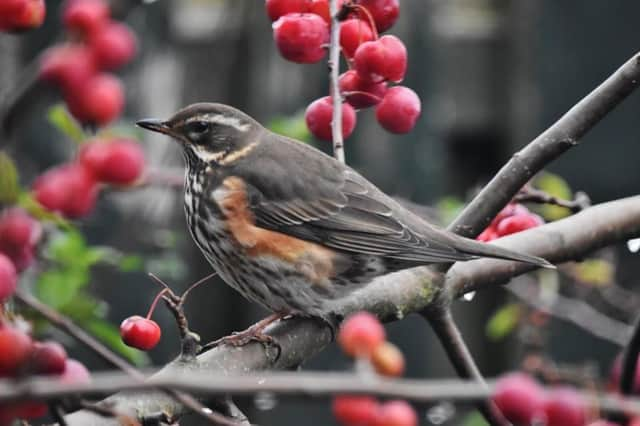Wildlife: North European migrant birds have been heading our way


The migrant blackbirds are altogether more sociable, and happy to flock and feed together, whereas the local birds are territorial and will see off strangers. The blackbird’s cousin, the redwing, has recently arrived in flocks of fifty or more birds at a time. Ray Sykes of Todwick sent a picture quickly taken from his kitchen window and of a solitary redwing feeding on his crab apple. In his garden that is normally the preserve of the blackbirds and maybe an occasional fieldfare, but this was a first redwing. Jan Turner on the other hand, lives at Meersbrook just opposite the park, and has had flocks of twenty or thirty birds at a time on her cotoneaster. Then today, I had a flock of redwings flying low over the road between Chesterfield and Matlock, the bright red under the wings clearly visible in flight. Mistle thrushes have also started to sing from high treetops, which does seem early, and in my garden, we have had a single song thrush. This is not a common species around where I live, and so a regular visiting bird is good to see. All the thrushes are fond of foraging under areas of shrubbery like rhododendrons and under mature beech trees too. These are good places to spot visiting redwings and fieldfares; with any luck there may be bramblings as well.
Other birds flocking up now in my local park, include the crows such as jackdaw, carrion crow, with just a few rooks in amongst them. There are magpies too, but they tend to keep their own company rather than mingling with the other species. If we do get another cold, snowy period, then expect an influx of rarities like the gorgeous waxwing. Rowan, ornamental whitebeam, cotoneaster, and pyracantha bushes are all worth watching for these birds joining the various thrushes at the feast.
Advertisement
Hide AdAdvertisement
Hide AdProfessor Ian D. Rotherham, researcher, writer & broadcaster on wildlife & environmental issues, is contactable on [email protected] ; follow Ian’s blog (https://ianswalkonthewildside.wordpress.com/ ) and Twitter @IanThewildside